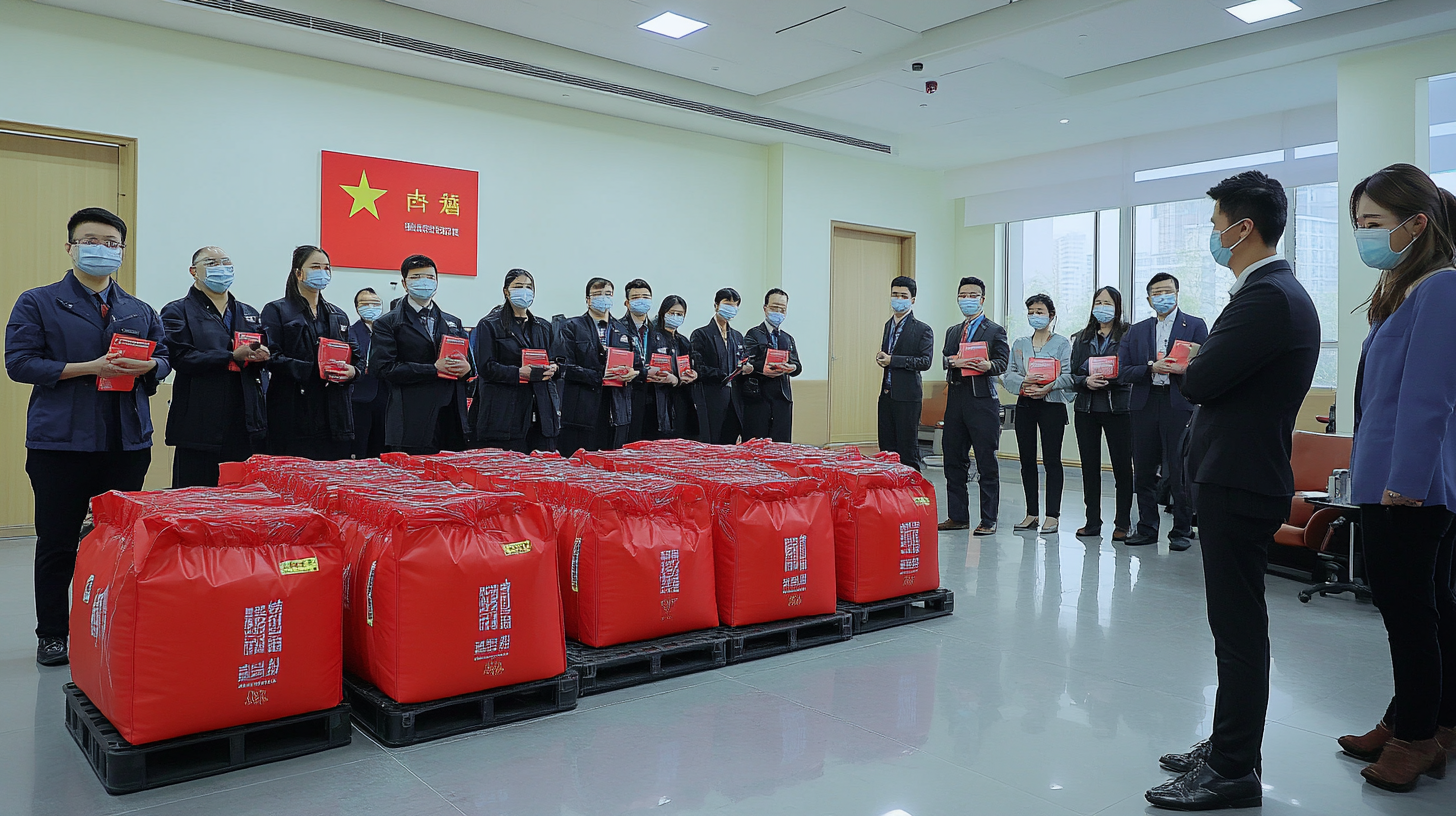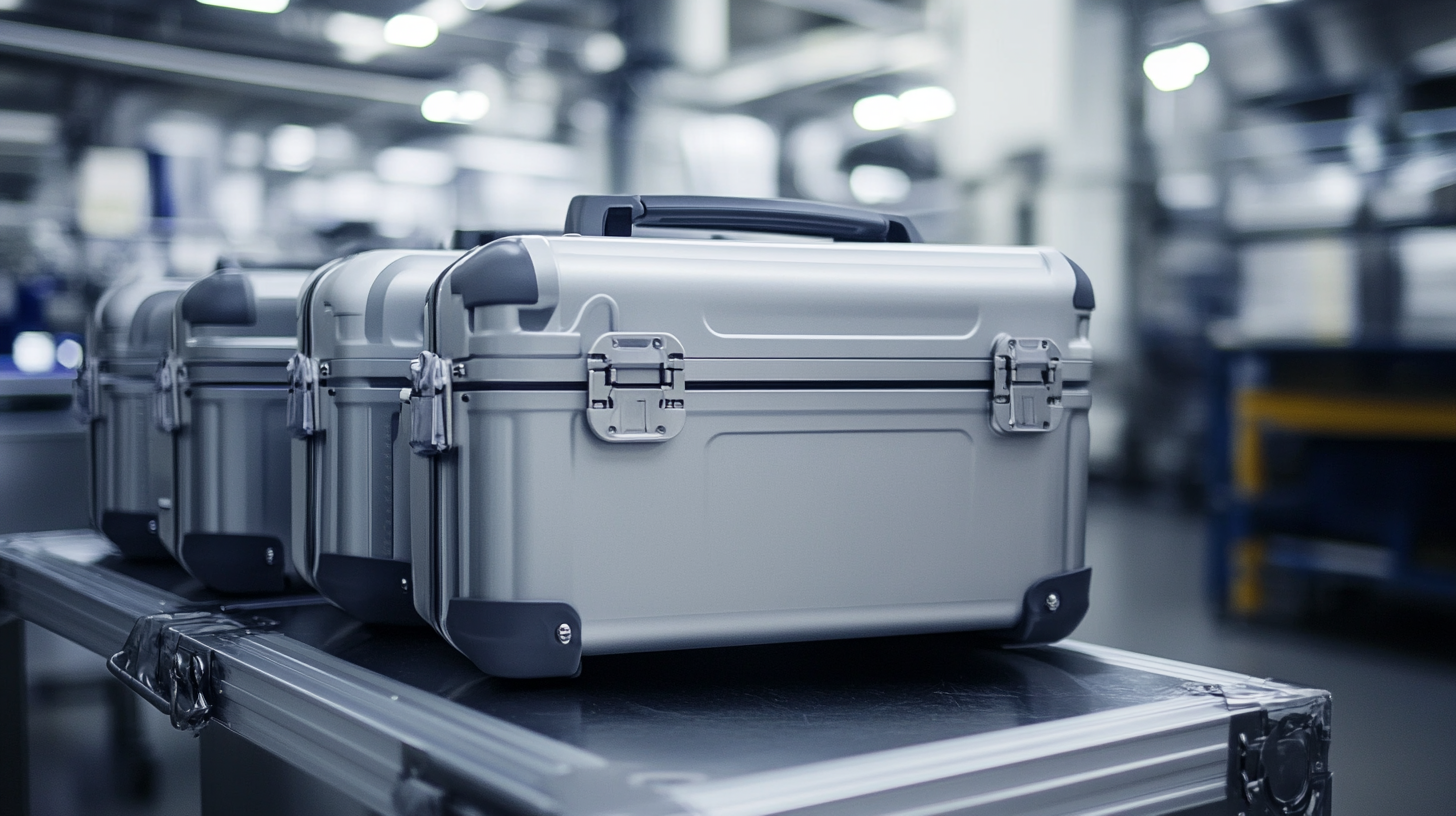- 0086-0769-87986375
- Welcome you to Dongguan Yili Bags Co., Ltd. website!
Global Suppliers Trust Chinese Exports in Medical Equipment Bags Driven by 2023 Market Trends
In recent years, the global medical equipment market has seen significant growth, with the Medical Equipment Bag emerging as a crucial component in safeguarding and transporting healthcare supplies. According to a report by MarketsandMarkets, the global medical bags market is projected to reach $5.5 billion by 2025, driven by increasing healthcare expenditures and the rising demand for quality medical services. As countries continue to navigate post-pandemic challenges, trust in Chinese exports of medical equipment bags has surged, owing to their affordability and reliability. With the World Health Organization indicating that preparedness for health emergencies is critical, medical professionals increasingly rely on secure and efficient storage solutions, reinforcing the importance of Medical Equipment Bags in healthcare logistics. This blog will explore the 2023 market trends influencing global supply chains and the driving forces behind the confidence in Chinese exports within this vital sector.

Emerging Trends in Global Medical Equipment Exports: A 2023 Perspective
The global landscape for medical equipment exports is witnessing transformative shifts in 2023. With an estimated market size projected to exceed USD 623 billion, the trust placed by global suppliers in Chinese exports, particularly in medical equipment, has never been more pronounced. The surge in the demand for effective medical devices is intertwined with the advent of emerging trends, including point-of-care testing, which is revolutionizing diagnostics by enabling faster and more reliable results outside traditional laboratory settings. This shift is critical in addressing the growing healthcare needs globally.
Meanwhile, the ASEAN region finds itself at a crossroads as China's export capabilities expand amid a climate of increasing global de-risking. Countries within ASEAN have historically benefited from China's rapid industrial growth, but current trends indicate a potential realignment of global supply chains. As nations reassess their economic dependencies, opportunities may arise for ASEAN to reposition itself in the global medical equipment market while navigating the inherent challenges of this delicate economic balance. The evolving dynamics of the medical device market, along with geopolitical factors, will play a significant role in shaping the future of exports and healthcare solutions worldwide.
Global Medical Equipment Exports: 2023 Trends
This chart illustrates the projected growth of different types of medical equipment exports from China in 2023. It highlights how global suppliers are increasingly trusting Chinese-made medical equipment, driven by emerging trends in the industry.
Market Growth Analysis: The Surge in Demand for Chinese Medical Equipment
The surge in demand for Chinese medical equipment has been remarkable in 2023, driven by factors such as technological advancements, competitive pricing, and an expanding global market. According to a recent report by Grand View Research, the global medical equipment market is projected to grow at a compound annual growth rate (CAGR) of 7.3%, reaching USD 660 billion by 2025. A significant portion of this growth is attributed to the increasing adoption of advanced medical technologies and the urgent need for healthcare services in both developed and developing regions.
This rise in demand is particularly evident in the medical equipment bags sector, where Chinese manufacturers are establishing themselves as trusted suppliers. A study by Market Research Future indicates that the surgical and medical bags market is expected to witness a CAGR of 6.5% from 2021 to 2027. Chinese exports are playing a crucial role in meeting this demand, fueled by innovations in product design and enhanced production efficiencies. With the ongoing global health challenges, the reliance on Chinese medical equipment is likely to continue, solidifying its position in the international marketplace.
Key Drivers of Trust in Chinese Exports: Quality and Regulatory Compliance
The global medical equipment market is increasingly relying on Chinese exports, particularly in the realm of medical bags. A recent report by Grand View Research indicates that the global medical bags market is anticipated to reach USD 12.10 billion by 2028, with a significant portion of this growth attributed to Chinese manufacturers. The trust vested in these exports hinges primarily on two pivotal factors: quality and regulatory compliance. Chinese manufacturers have made substantial investments in advanced technology and quality control processes, resulting in medical bags that meet international standards. This quality assurance has been further validated by various certifications, including ISO 13485, which emphasizes the importance of a robust quality management system in healthcare products.
Regulatory compliance also plays a crucial role in building trust among global suppliers. The Chinese government has implemented stringent regulations to ensure that exports, particularly in the medical sector, adhere to global safety and efficacy standards. According to a report by MarketsandMarkets, the total healthcare compliance market is expected to grow at a CAGR of 13.2% from 2021 to 2026, reflecting the increasing emphasis on compliant practices in manufacturing. This regulatory framework not only enhances the credibility of Chinese products but also assures international buyers of their safety, effectively reducing any apprehensions linked to importing medical equipment. As such, the combination of quality assurance and regulatory adherence solidifies the confidence in Chinese exports, making them a preferred choice in the global market.

Competitive Edge: How Chinese Suppliers Are Meeting Global Market Needs
Chinese suppliers have increasingly established a competitive edge in the global medical equipment market, particularly in the production of specialized medical equipment bags. This trend is strongly influenced by the 2023 market dynamics, which emphasize safety, reliability, and cost-effectiveness. Through innovative manufacturing processes and adherence to stringent quality standards, Chinese companies are not only meeting but exceeding international expectations. Their focus on research and development has led to the creation of products that cater to various healthcare needs, positioning them favorably against their global competitors.
Moreover, the ability to scale production efficiently allows Chinese suppliers to respond rapidly to shifts in demand, a critical factor in the ever-evolving healthcare sector. With partnerships and collaborations with international organizations, they have gained invaluable insights into global market requirements, enhancing their responsiveness. These suppliers are also leveraging advanced technologies such as automation and data analytics to streamline operations and improve product quality, which fortifies their reputation as trusted providers in the global supply chain for medical equipment. As the world increasingly relies on Chinese exports, the strategic initiatives undertaken by these suppliers signify a remarkable transformation in the medical equipment landscape.
Global Suppliers Trust Chinese Exports in Medical Equipment Bags Driven by 2023 Market Trends
| Supplier Name | Country | Market Share (%) | Product Range | Year Established |
|---|---|---|---|---|
| Supplier A | China | 25 | Medical Bags, Equipment | 2005 |
| Supplier B | USA | 15 | Surgical Kits | 2010 |
| Supplier C | Germany | 20 | Diagnostic Tools | 2000 |
| Supplier D | India | 10 | Consumables | 2015 |
| Supplier E | UK | 30 | Emergency Equipment | 2008 |
Future Outlook: The Sustainability of China's Medical Equipment Supply Chain
As the global landscape for medical equipment continues to evolve, China's supply chain emerges as a crucial player. The sustainability of this supply chain is driven by a commitment to innovation and environmental stewardship. In 2023, major trends indicate that Chinese manufacturers are increasingly integrating sustainable practices into their production processes, optimizing resource usage and minimizing waste. This transition is not only beneficial for the environment but also enhances the reliability and credibility of Chinese exports.
**Tips for Maintaining a Sustainable Supply Chain:**
Businesses looking to optimize their supply chains should prioritize transparency by conducting regular audits and assessments to ensure sustainability standards are met. Additionally, collaborating with suppliers who share similar values can lead to more efficient processes and resource sharing, ultimately reducing the carbon footprint.
Investing in advanced technologies, such as IoT and AI, can drive efficiency in logistics and inventory management. This forward-thinking approach will not only streamline operations but also contribute to a more sustainable business model, positioning companies favorably in a market increasingly driven by eco-conscious consumers.

